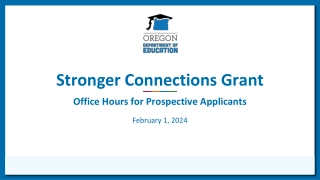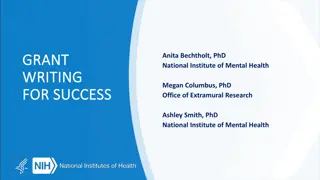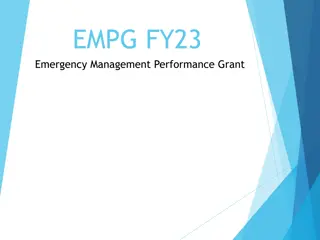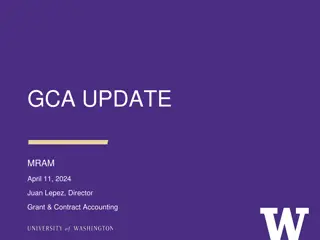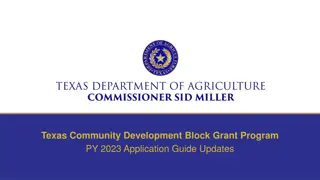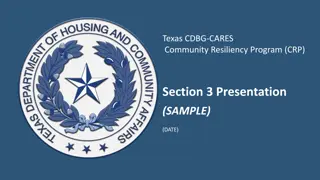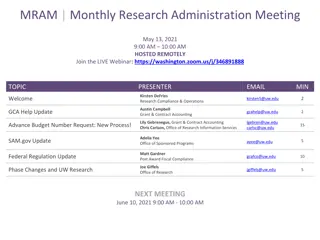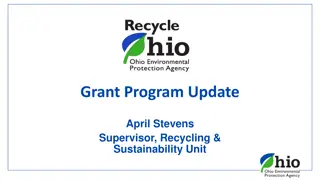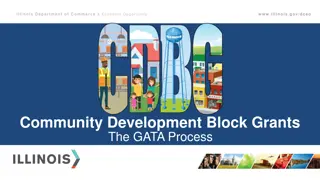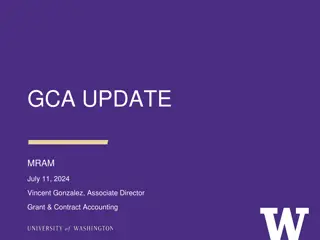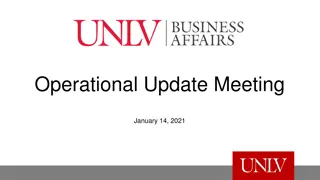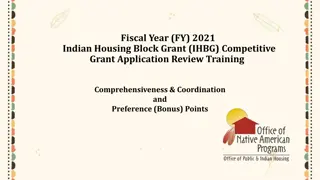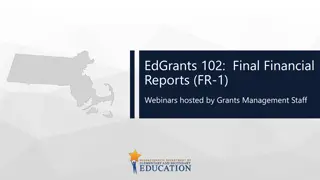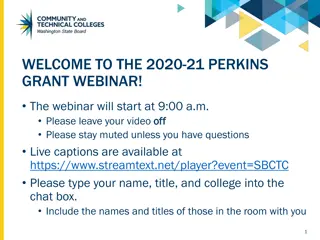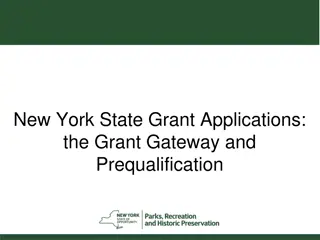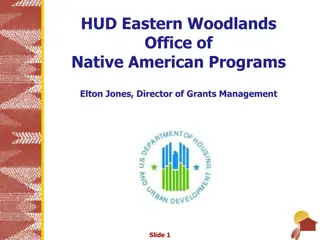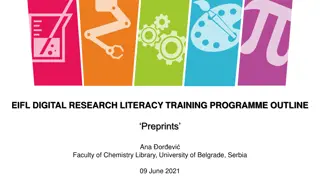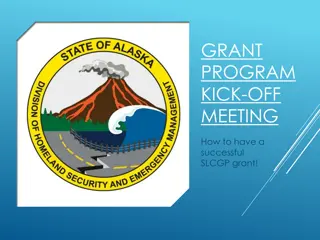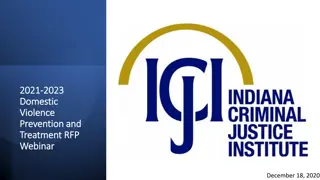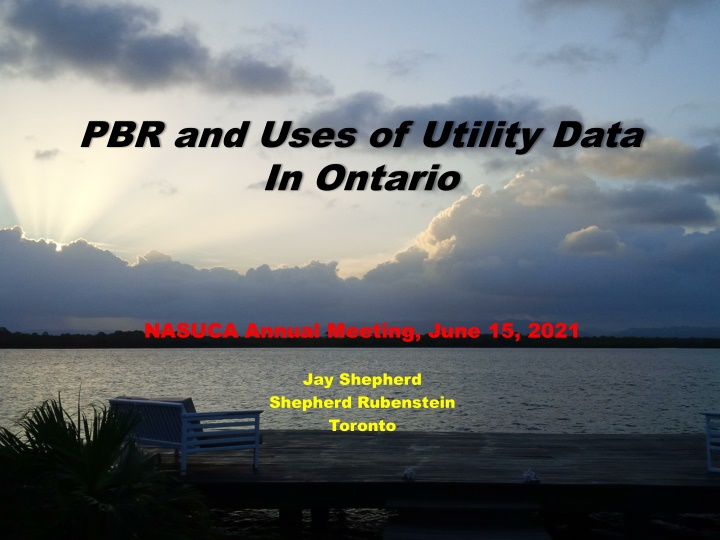
NFR 10-Year Grant Updates Jun 23, 2021
Budget 2021 included approval for an annual NFR 10-Year Grant escalator. Treasury Board approval for the escalator scheduled for September 2021. The escalator will be formula-based, driven by on-reserve population and inflation. Minimum escalator 2% per year, applied from Year 2 of the Grant from April 1st, 2021. Addressing funding shortfalls for Grant entrants of April 2019 and new grants for 2022-23. ISC outreach for interested First Nations. No update on aggregate organizations' eligibility for the Grant. Contacts: Jody Kaden, Anthony Hadfield.
Download Presentation

Please find below an Image/Link to download the presentation.
The content on the website is provided AS IS for your information and personal use only. It may not be sold, licensed, or shared on other websites without obtaining consent from the author. If you encounter any issues during the download, it is possible that the publisher has removed the file from their server.
You are allowed to download the files provided on this website for personal or commercial use, subject to the condition that they are used lawfully. All files are the property of their respective owners.
The content on the website is provided AS IS for your information and personal use only. It may not be sold, licensed, or shared on other websites without obtaining consent from the author.
E N D
Presentation Transcript
PBR and Uses of Utility Data In Ontario NASUCA Annual Meeting, June 15, 2021 Jay Shepherd Shepherd Rubenstein Toronto
Ontarios Long History with PBR/IRM Ontario Energy Board regulates rates for: Electricity Tx, Dx, and legacy generation Gas Dx and Storage At one time 350 rate regulated utilities Now about 65 PBR/IRM (formula ratemaking) since about 2000 Currently in the 5thGeneration structure No UCA Grassroots model instead Interested consumer groups reimbursed (by the utilities) on commission orders for costs of participation e.g. schools - $500M/yr energy costs - 60% regulated 2 10 intervenors in each proceeding
Utility Data a History Utility Annual Filings Detailed financial and operating information Summarized in a series of yearbooks Intervenors asked for Excel Versions Starting sharing in 2007, back to 2005 data Initially used for Diagnostics Identifying things we should review more thoroughly Areas in which a utility is an outlier No initial direct benchmarking by intervenors Contagious Commission staff Utility management and boards of directors
Benchmarking and Data Integrity Benchmarking started around 2008 Unit cost benchmarking Econometric model to control for different business conditions predicted utility-specific total costs Initial benchmarking adjusted stretch factor Small variations on escalator based on performance Theory that more efficient utilities have less room to achieve more productivity Use in Practice Data often not consistent Commission and consultants worked to make data management and reporting more consistent Increasing use of Commission-developed models to provide data in annual reporting and rate cases Training and Data Cleansing
Integration of Data and PBR/IRM Benchmarking results Continue to adjust for efficiency in rate formula Also key evidence in cost of service rebasing Negotiated settlements/ADR Most rate case issues resolved by negotiation between intervenors and utility Heavy reliance on data incl. analysis of comparative performance and trends Hearings Comparatives and trends increasingly accepted as cross- examination aids and in final argument Commission likes to show objective basis for its judgement
Examples Sample Data Package in Excel Things that make data more valuable: Format (e.g. Excel models) Quantity what data is being reported and shared? Consistency (in both format and internal controls) Use of Data Page 8 Data for 2018 top and bottom 10 of (then) 63 Sorted for PP&E/customer High can mean - very rural service territory Or, high growth area, so newer assets Or, heavy industrial customer base Or, own their own transmission facilities Or, overspending/gold-plated/excessive non-infrastructure Low can mean harvesting the assets Or, declining customer base Or, heavy residential customer base
Thank you for your attention NASUCA Annual Meeting, June 15, 2021 Jay Shepherd jay@shepherdrubenstein.com 416-804-2767

